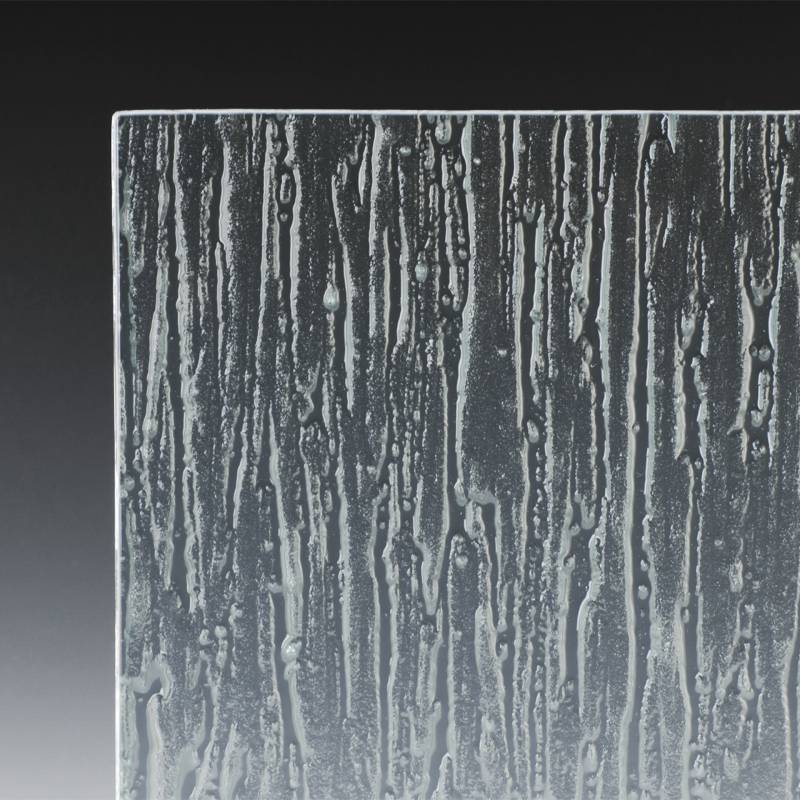The Benefits and Applications of Opaque Tempered Glass
Opaque tempered glass, often regarded as a modern marvel in architectural and interior design, combines functionality with aesthetic appeal. Known for its durability and safety features, this type of glass has become increasingly popular in various applications, from residential settings to commercial spaces.
One of the primary characteristics of opaque tempered glass is its ability to obscure visibility while still allowing light to pass through. This quality is particularly desirable in spaces where privacy is paramount. For example, in bathrooms, conference rooms, or private offices, opaque tempered glass provides an elegant solution that allows natural light to illuminate the space while preventing prying eyes from seeing in. This blend of light and privacy creates an inviting atmosphere without compromising confidentiality.
The manufacturing process of opaque tempered glass involves heating it to high temperatures and then rapidly cooling it, which significantly increases its strength compared to standard glass. This tempering process also enhances its resistance to thermal stress, making it less likely to shatter upon impact or when exposed to temperature fluctuations. This is especially important in commercial settings where safety is a priority. For instance, restaurants and shops often use opaque tempered glass in their design to ensure durability and safety for their patrons.
opaque tempered glass
In addition to its practical benefits, opaque tempered glass also offers aesthetic versatility. It comes in a variety of finishes and colors, allowing architects and designers to choose the perfect glass to complement their overall vision. Whether it’s a frosted look for a minimalist design or a colored finish to add a pop of vibrancy, the options are nearly limitless. This versatility enables the creation of unique and customized environments that reflect personal or brand identity.
Moreover, the use of opaque tempered glass can contribute to energy efficiency in a building. By incorporating opaque sections into window designs, properties can reduce glare and unwanted heat gain from direct sunlight. This can lead to lower energy costs for heating and cooling, promoting a more sustainable approach to building design.
The applications of opaque tempered glass extend beyond merely walls and windows. It is widely used in furniture design, such as tabletops and partitions, where both aesthetic appeal and durability are essential. The smooth surface and modern look of opaque glass can easily elevate the design of any space, making it a popular choice among interior designers.
In conclusion, opaque tempered glass symbolizes the perfect fusion of functionality, safety, and aesthetic appeal. Its unique properties make it an invaluable resource in both residential and commercial applications, enabling the creation of spaces that prioritize privacy, safety, and style. As technology continues to advance, the possibilities for the innovative use of opaque tempered glass will undoubtedly expand, leading to even more creative solutions in architectural and interior design.
 Afrikaans
Afrikaans  Albanian
Albanian  Amharic
Amharic  Arabic
Arabic  Armenian
Armenian  Azerbaijani
Azerbaijani  Basque
Basque  Belarusian
Belarusian  Bengali
Bengali  Bosnian
Bosnian  Bulgarian
Bulgarian  Catalan
Catalan  Cebuano
Cebuano  Corsican
Corsican  Croatian
Croatian  Czech
Czech  Danish
Danish  Dutch
Dutch  English
English  Esperanto
Esperanto  Estonian
Estonian  Finnish
Finnish  French
French  Frisian
Frisian  Galician
Galician  Georgian
Georgian  German
German  Greek
Greek  Gujarati
Gujarati  Haitian Creole
Haitian Creole  hausa
hausa  hawaiian
hawaiian  Hebrew
Hebrew  Hindi
Hindi  Miao
Miao  Hungarian
Hungarian  Icelandic
Icelandic  igbo
igbo  Indonesian
Indonesian  irish
irish  Italian
Italian  Japanese
Japanese  Javanese
Javanese  Kannada
Kannada  kazakh
kazakh  Khmer
Khmer  Rwandese
Rwandese  Korean
Korean  Kurdish
Kurdish  Kyrgyz
Kyrgyz  Lao
Lao  Latin
Latin  Latvian
Latvian  Lithuanian
Lithuanian  Luxembourgish
Luxembourgish  Macedonian
Macedonian  Malgashi
Malgashi  Malay
Malay  Malayalam
Malayalam  Maltese
Maltese  Maori
Maori  Marathi
Marathi  Mongolian
Mongolian  Myanmar
Myanmar  Nepali
Nepali  Norwegian
Norwegian  Norwegian
Norwegian  Occitan
Occitan  Pashto
Pashto  Persian
Persian  Polish
Polish  Portuguese
Portuguese  Punjabi
Punjabi  Romanian
Romanian  Russian
Russian  Samoan
Samoan  Scottish Gaelic
Scottish Gaelic  Serbian
Serbian  Sesotho
Sesotho  Shona
Shona  Sindhi
Sindhi  Sinhala
Sinhala  Slovak
Slovak  Slovenian
Slovenian  Somali
Somali  Spanish
Spanish  Sundanese
Sundanese  Swahili
Swahili  Swedish
Swedish  Tagalog
Tagalog  Tajik
Tajik  Tamil
Tamil  Tatar
Tatar  Telugu
Telugu  Thai
Thai  Turkish
Turkish  Turkmen
Turkmen  Ukrainian
Ukrainian  Urdu
Urdu  Uighur
Uighur  Uzbek
Uzbek  Vietnamese
Vietnamese  Welsh
Welsh  Bantu
Bantu  Yiddish
Yiddish  Yoruba
Yoruba  Zulu
Zulu 

